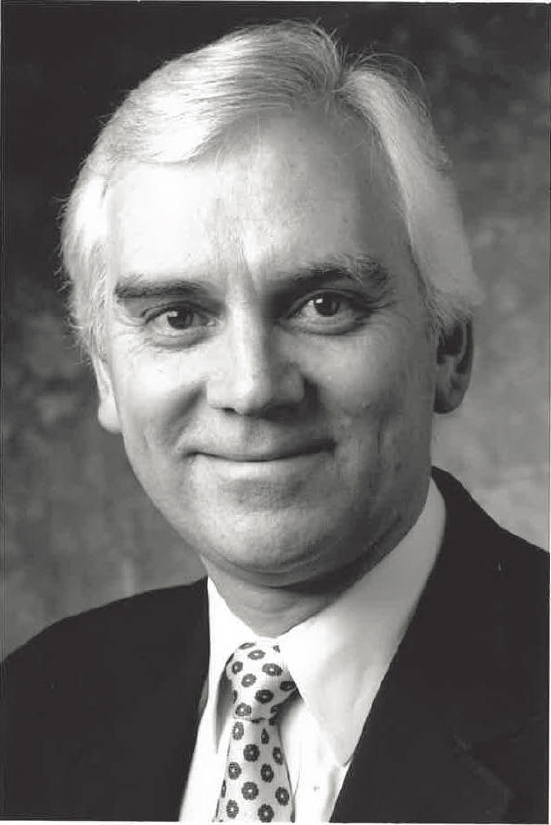STEPHEN C. JACOBSEN
1940–2016
Elected in 1990
“For engineering artificial kidneys, the Utah artificial arms, robots, and micro-motors and for successful commercial implementation of advanced products.”
BY EDMUND Y.S. CHAO
With his prolific creativity, ingenious inventions, exquisite design concepts, and futuristic mind, STEPHEN CHARLES JACOBSEN was peerless in his chosen fields of mechanical and bioengineering. He was the biomechanical engineer behind a number of medical firsts: the first artificial heart successfully implanted in a human (the Jarvik-7), the first artificial wearable kidney, and the Utah Artificial Arm, which amputees could precisely control with tiny twitches of a chest or shoulder muscle. He died April 3, 2016, at age 75.
Steve was born in Salt Lake City on July 15, 1940. His mother was an elementary school teacher and his father was a commercial artist and amateur inventor. He grew up around tools and had a passion for taking things apart to see how they worked. “As a teenager, he completely disassembled an MG sports car in our basement, then painstakingly put it back together again,” said his sister, Charlyn Dalebout.
He majored in mechanical engineering at the University of Utah, but at the end of his junior year administrators asked him to leave because of poor grades and an unfortunate practical joke that resulted in a large explosion in the engineering building. He was given a second chance by Wayne Brown, the dean of engineering, who called him into his office and said, “Steve, you are the smartest kid I have ever had the privilege
of teaching. If you can keep a ‘B’ average, we’ll get you back into school and get you a degree.”
Jacobsen graduated in 1967 and went on to get a master’s degree (1970), also in mechanical engineering, under the mentorship of surgeon Willem J. Kolff (NAE 1989) and engineer-physician Clifford Kwan-Gett. Both were doing pioneering work on mechanical hearts and kidneys in a new division of artificial organs at the University of Utah. Jacobsen did early prototyping of what eventually became the Jarvik-7.
Jacobsen was accepted into the mechanical engineering PhD program at the Massachusetts Institute of Technology under the direction of Robert Mann (NAE 1973), the renowned mechanical engineering professor who recognized the importance of the new discipline of biomedical engineering and started work on the first electromechanical artificial limbs for lower-limb amputees. I got to know Steve very early in my career since Mann was my mentor too. Steve and I were engaged in the exciting fields of simulation and virtual reality and competed in a Defense Advanced Research Projects Agency (DARPA) call for project submissions. Among several very high-powered groups around the country, Steve was the final winner with his gravity-powered exoskeleton brace to aid soldiers carrying backpacks of more than 60 pounds.
I subsequently established one of the first gait analysis laboratories, at the Mayo Clinic in Rochester, Minnesota, and shared the experimental data with Woodie Flowers (NAE 1994). At the time Woodie was an investigator in Mann’s laboratory—where Jacobsen was learning the complex algorithms for robotic control theory and how to apply them to the design of artificial limbs for amputees to recover near-normal limb function. Steve shared an office and design ideas with Woodie, who marveled that “Steve could see so many things at once. He saw parallels that crossed domains. His limit-pushing was infectious.”
Steve joined the faculty of the University of Utah in 1983 as a research professor for the Department of Bioengineering, accepted a joint appointment in the Department of Computer Science in 1992, and in 1996 was designated a Distinguished
Professor of Mechanical Engineering. He was also director of the Center for Engineering Design (1973–2007). He authored or coauthored 170 technical publications and 276 technical presentations, and was named on more than 200 US patents, 123 foreign patents, and 50 trademarks.
At the same time, he founded a number of companies—Sterling Research Corp., Sarcos (now Raytheon-Sarcos), Micro-Drugs Inc., Eye-Port Corp., Motion Control Inc., IOMED Inc., MicroJect Corp., and Precision Vascular Systems Inc.—and designed animatronic pirates for the Pirates of the Caribbean ride at Disney theme parks and, for DARPA, a pole-climbing, robotic snake with a spy camera intended for remote surveillance in enemy territory. He enjoyed assembling teams of engineers, prototype builders, programmers, and artists to come up with creative approaches and applications.
He also volunteered his expertise for the National Academies, as a member of the Keck Futures Initiative Smart Prosthetics Steering and Program Committees (2006–07), Committee on Human Exploration (1998–2000), and Manufacturing Studies Board (1992–95). For the NAE he served twice on the Mechanical Engineering Peer Committee (1993–96, 2004–07).
His impact was recognized through many national and state awards. He was elected to the National Academy of Engineering and Institute of Medicine—both in 1990—and the American Academy of Orthotists and Prosthetists. He won the Leonardo da Vinci Award from the American Society of Mechanical Engineers in 1987; the Utah Governor’s Medal for Science and Technology in 1990; and the Pioneer of Robotics Award from the Institute of Electrical and Electronic Engineers in 2007, “In recognition of outstanding contributions to the design and control of leading edge robots and other animate machines.” In 2012 he received one of five “Most Prolific Inventor Awards” from the University of Utah’s Technology Commercialization Office for having more than 200 inventions, the Utah Genius Lifetime Achievement Award, and the University of Utah Distinguished Innovation and Impact Award.
Steve’s personality, wit, and willingness to help others made him a beloved member of the community. His loss is greatly felt by friends and colleagues.
He is survived by his wife, Lynn; their children, Peter Jacobsen and Genevieve Boyles; and two grandchildren.







